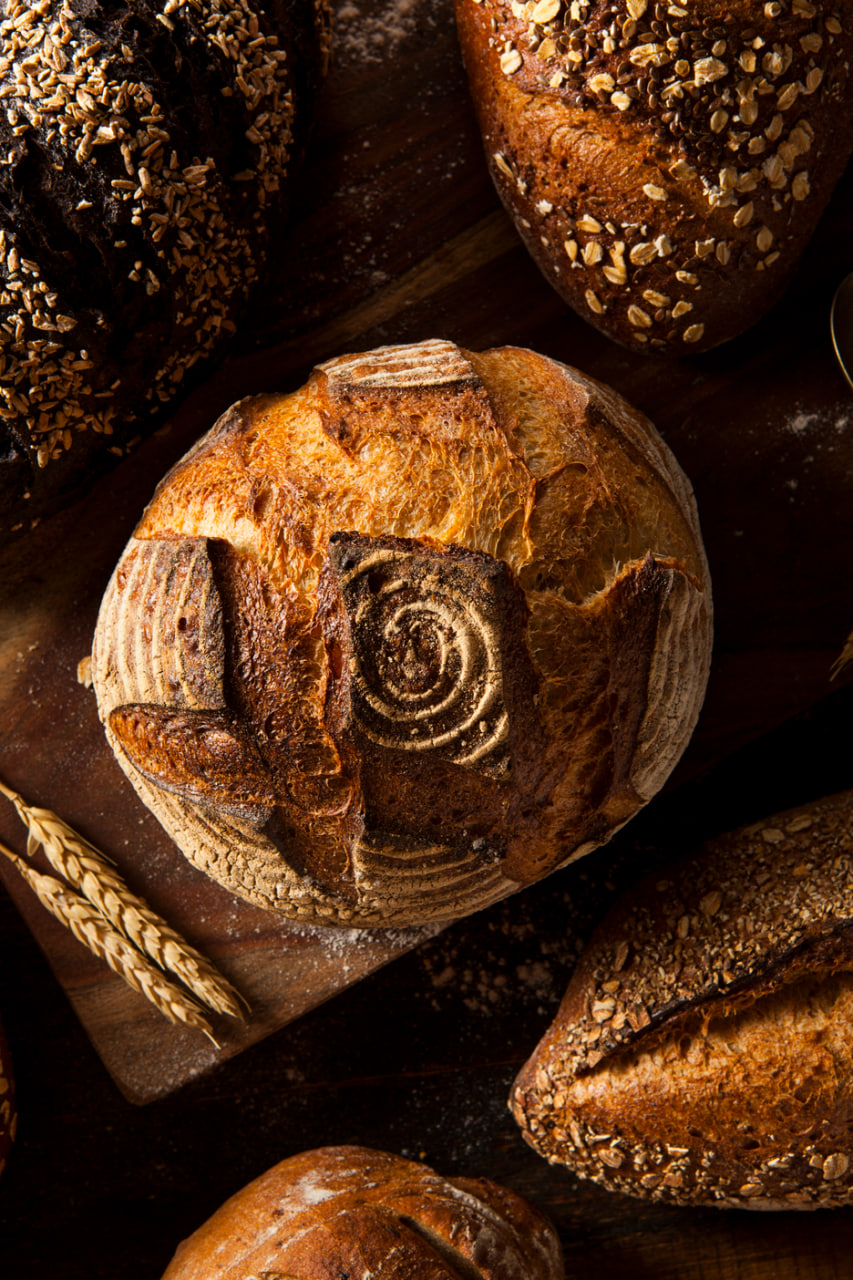Call us now:

At first glance, all yeast seems to serve the same purpose — leavening dough and making it rise. But in reality, the difference between wild yeast and commercial yeast goes far deeper than performance. It’s a distinction that defines the very nature of sourdough baking. Understanding how they differ, both biologically and behaviorally, is essential for any baker seeking to work with natural fermentation and sourdough starters.
Commercial yeast, most commonly sold as active dry or instant yeast, is a single strain known as Saccharomyces cerevisiae. It was isolated and cultivated for its reliability, speed, and predictable rise. Over decades of industrial baking, this yeast became the go-to leavening agent for mass-produced bread. It thrives in a narrow range of conditions, works fast, and produces a consistent result. That’s why loaves made with commercial yeast typically take only a couple of hours to rise and bake.
Wild yeast, on the other hand, is a collection of many naturally occurring strains found in the air, on flour, and even on your hands and surfaces. A sourdough starter is essentially a small ecosystem — not just of wild yeast, but also of lactic acid bacteria, which work together in harmony. These microorganisms are not lab-controlled, but rather nurtured through daily feedings and environmental conditions. Because wild yeast ferments more slowly and coexists with bacteria, the result is a complex interaction that gives sourdough its distinctive flavor, texture, and structure.
The fermentation process is where the difference becomes especially noticeable. Commercial yeast produces mostly carbon dioxide and ethanol, leading to quick rise but less nuanced flavor. Wild yeast, in cooperation with lactobacilli, generates a broader spectrum of organic acids and aromatic compounds. This slower, natural fermentation develops a deeper tang, improved digestibility, and better crust and crumb structure. The acids created also strengthen the dough, allowing for longer fermentation and more flexibility in shaping and baking.
The behavior of the two yeasts in dough is also dramatically different. Dough leavened with commercial yeast follows a fast, linear timeline. It rises quickly, often needing only one or two hours to double in size before baking. Sourdough doughs, powered by wild yeast, require longer fermentation periods, often including overnight proofing or multi-stage rises. This extended time allows enzymes in the flour to break down starches and proteins more fully, contributing not only to flavor but also to nutritional benefits.
Digestibility is another area where wild yeast shines. The presence of lactic acid bacteria in sourdough helps neutralize phytic acid, a naturally occurring compound in grains that can block mineral absorption. Some studies suggest that long fermentation may reduce gluten content slightly, making sourdough bread easier to digest for some people — though it’s important to note it is not safe for those with celiac disease.
There’s also a philosophical and practical element to choosing wild yeast. Maintaining a starter requires attention and patience. Unlike commercial yeast that comes in a packet and works on demand, a starter is something you grow, feed, and observe. It becomes a personal connection to your baking, something unique to your home, your flour, and your environment. No two starters are exactly the same. This individuality is part of the magic — and the challenge — of baking with wild yeast.
Still, both yeasts have their place. Commercial yeast is useful for quick bakes, consistent results, and beginners just starting their bread journey. But for those who seek depth, character, and tradition in their bread, wild yeast offers something profoundly different. It’s not just a tool for leavening — it’s a living culture that brings a rich, slow, and satisfying rhythm to the process.
In the end, the choice between wild and commercial yeast is not just about ingredients but about intention. Are you baking for speed and convenience, or for flavor and connection? Understanding the differences helps you appreciate what makes sourdough special — and why starters deserve the time and care they require.
